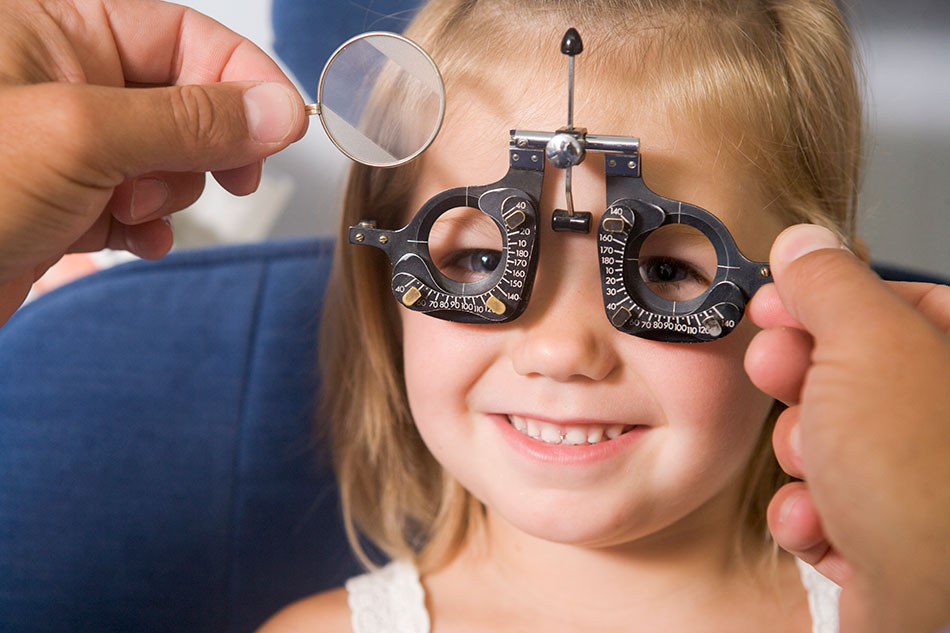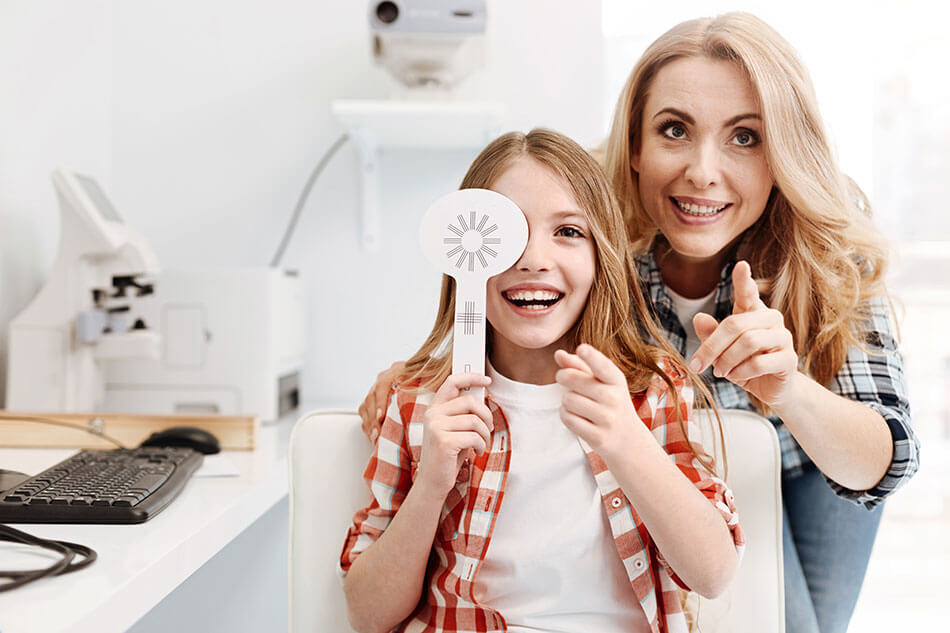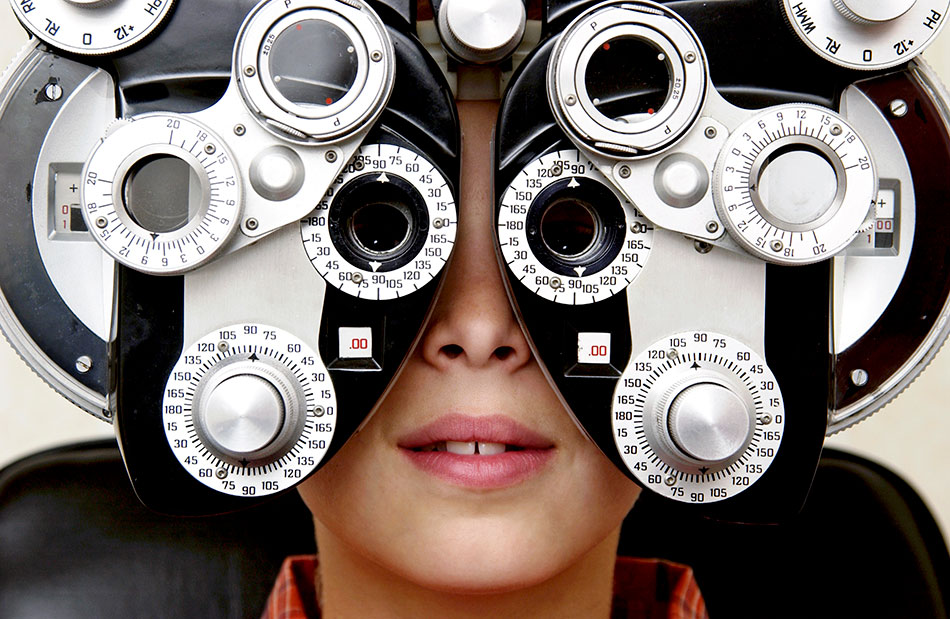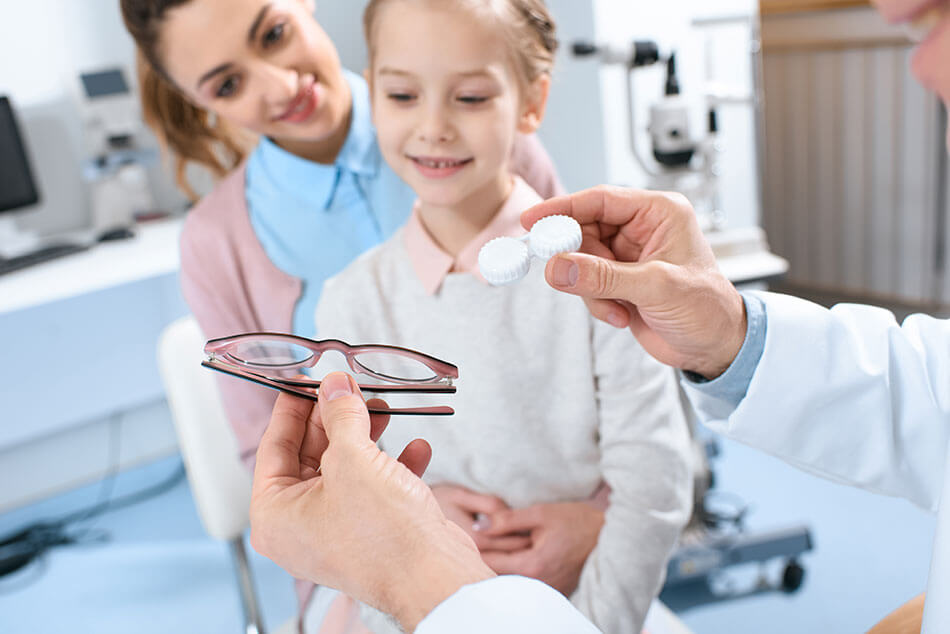Keep Your Child’s Eyes Healthy for Children’s Vision Month and Beyond

We do all that we can to secure the well-being of ourselves and our families. When children are involved, we also do the usual rounds of visiting the family doctor at least once a year.
We’re sure that you can identify with keeping up with all the shots and milestones for your child. But what about your child’s eyes? These are vital for their learning and holistic development. Thus you must keep your child’s eyes healthy at every growth stage.
October is Children’s Vision Month in Canada, and it’s a good reminder to plan your child’s visit to the optometrist. Join us as we talk about the importance of children’s eye health and what you can expect from an eye exam and beyond!
The Importance of Children’s Vision Health
We must be aware about the effects of vision problems on children’s learning and development.
Learning in the classroom is primarily visual, so the healthy functioning of a child’s eyes is essential. It is important to listen to your child and watch closely for any cues that might signify vision issues.
Some key indicators of possible vision problems in your child include:
- Performance falling behind the rest of the class
- Expressions of frustration with learning
- Low self-esteem
- Behaviour and discipline issues
Untreated vision problems can increase the likelihood of school drop-out. This in turn can lead to a lifetime of disadvantages and under-achievement.
Let’s explore what you can do to boost your child’s advantage in the classroom and in the wider arena of life!

How Often Should Your Child Visit the Optometrist?
The Canadian Association of Optometrists recommends that visits to an eye care professional begin at six months of age.
For pre-school children between two to five years, there should be at least one eye exam. But if your child is considered to be high-risk, then the visits would need to be more frequent.
In the case of school-aged children (from ages 6 to 19), there should be annual visits to the optometrist.
It’s not enough to only visit your family doctor for the usual annual checkup. A visit to your optometrist is just as essential. These annual eye health visits will preserve your child’s vision for years to come!

What to Expect from an Eye Exam
Your optometrist will discuss your family history as well as your child’s health history to assess any potential concerns. They will first check your child’s visual acuity during a vision screening test.
While having 20/20 vision is great, it is not sufficient. They will also perform a comprehensive eye exam that accounts for every aspect of your child’s eyes.
These processes are completely noninvasive, so your child will not experience any fright or discomfort.
An eye exam covers several key areas of eye health. The exam will assess eye movements and coordination, as well as the distinctness of vision and peripheral vision. You will also get information on your child’s ability to focus their eyes and detect colour and depth correctly.
If vision problems are discovered, they can be treated early. These treatments can eliminate or effectively manage your child’s vision issues.
What if My Child Needs Corrective Lenses?

If your child needs corrective lenses — relax! Don’t worry! Your optometrist will discuss the various treatment options to fit your child’s needs. If your child is old enough and sufficiently mature, then they can also join the conversation. They can influence the decision on the best vision correction aid for them.
Depending on your child’s age and maturity, they may find contact lenses to be an interesting option. Glasses have a bad reputation — especially among teens. For this reason, your child may prefer wearing contacts to wearing glasses.
Contact lenses provide the same vision correction that glasses do. But contacts also have other advantages. They won’t hinder your child’s participation in gym class and sports. They will also avoid the issue of misplaced glasses. Contacts rarely fall out once they are put in the eyes, so losing them is unlikely. Your child can also maintain their budding fashion sense and cool points with contacts!
There are a variety of contact lenses available. Daily disposables are easy to manage. Your child would simply wear a pair and dispose of them daily. Each day starts with a fresh pair of clean contacts. You wouldn’t have to worry about the proper care of your child’s contact lenses.
Weekly and monthly contact lenses are also available. They offer the convenience of a lower cost. But you must ensure that your child understands the importance of properly cleaning and storing their contacts. Your child’s maintenance of their contacts and eye health will help to give them a sense of responsibility.

Other Ways to Keep Your Child’s Eyes Healthy
Our lives tend to focus on our screens. Similarly, the life of a child revolves around screen time. They can’t seem to get enough of the television, computer, tablet, or cellphone. They play games and text their friends. Unfortunately, all this screen time can really tax their eyes.
Limiting screen time gives those sore eyes a much needed break. You should implement the 20-20-20 rule with your child to help refocus their eyes. As a side benefit: it’s great for adults too!
Every 20 minutes take a break to focus on something that is 20 feet away for 20 seconds. It’s that simple! Their eyes will feel less strained. Of course, getting your child to put the screen away in favour of more physical activity also helps!
Maintain Children’s Eye Health All Year!
Children’s Vision Month in Canada is a good reminder to take action for your child’s eye health. If your child hasn’t had their annual visit to the optometrist, go ahead and schedule it. If they need corrective lenses, we have you covered! We invite you to explore our range of contact lenses and brands on our website.
